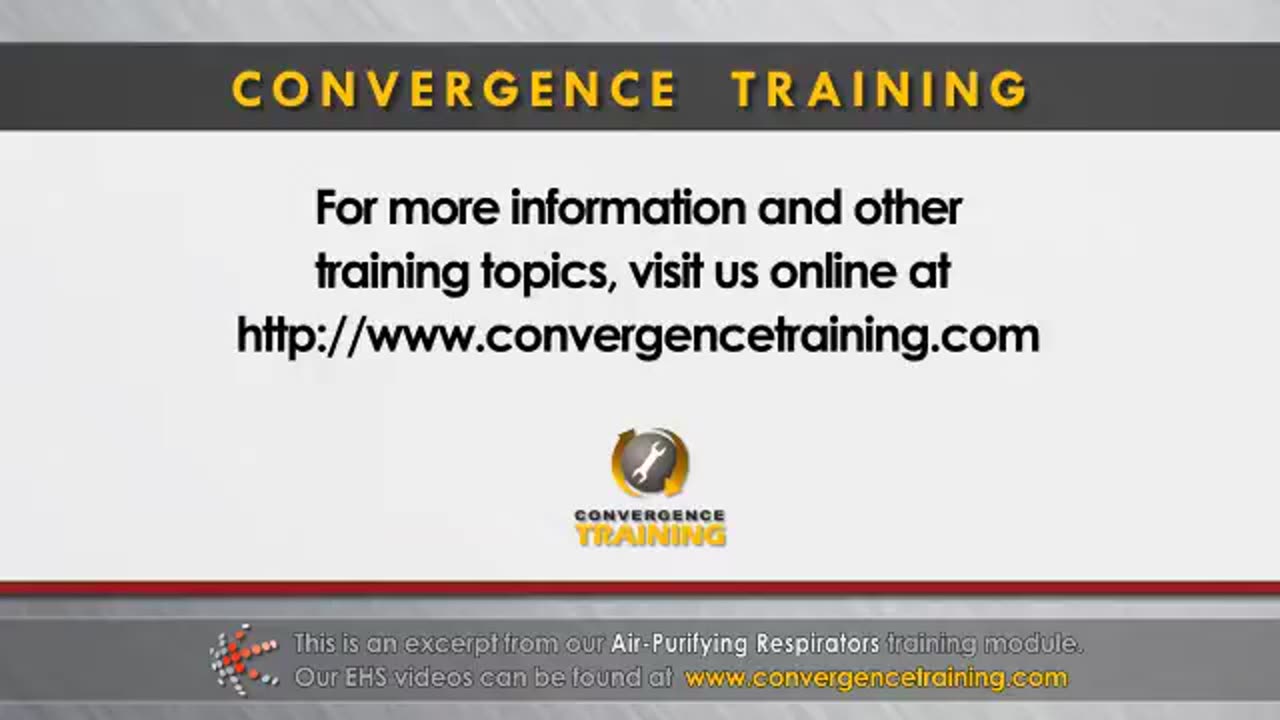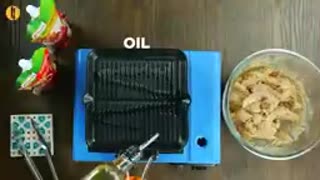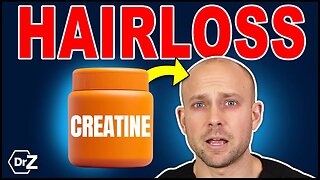Premium Only Content

Air-Purifying Respirators Training
### **Air-Purifying Respirators (APR) Training**
Air-Purifying Respirators (APRs) protect workers from inhaling harmful airborne contaminants such as dust, fumes, gases, or vapors. This training guide covers the proper selection, use, maintenance, and storage of APRs to ensure safety and compliance with workplace regulations.
---
#### **Objectives of APR Training**
1. Understand the purpose and function of air-purifying respirators.
2. Learn to select the correct APR for specific hazards.
3. Gain knowledge of proper donning, usage, and doffing procedures.
4. Understand maintenance, cleaning, and storage requirements.
---
### **1. Types of Air-Purifying Respirators**
1. **Disposable Respirators (e.g., N95):**
- Designed for single use to filter out particulates such as dust and smoke.
2. **Reusable Half-Face Respirators:**
- Cover the nose and mouth; equipped with replaceable filter cartridges.
3. **Reusable Full-Face Respirators:**
- Cover the entire face; provide eye protection along with respiratory protection.
4. **Powered Air-Purifying Respirators (PAPRs):**
- Use a battery-powered blower to pull air through filters; suitable for extended use or high-contamination environments.
---
### **2. Respirator Selection**
1. **Identify Hazards:**
- Conduct a hazard assessment to determine the type and concentration of airborne contaminants.
2. **Choose the Appropriate Filter/Cartridge:**
- **Particulate Filters:** For dust, mist, and fumes.
- **Gas/Vapor Cartridges:** For chemicals such as ammonia, chlorine, or organic vapors.
- **Combination Filters:** For environments with both particulates and gases.
3. **Ensure Proper Fit:**
- Select a respirator size that provides a secure seal for the wearer’s face.
---
### **3. Proper Use of APRs**
1. **Pre-Use Inspection:**
- Check for cracks, tears, or deformities in the respirator.
- Ensure straps, filters, and valves are intact and functioning.
2. **Donning (Putting On) the Respirator:**
- Position the respirator over the nose and mouth (or full face for full-face respirators).
- Secure the straps around the head or neck without overtightening.
- Perform a **User Seal Check**:
- **Positive Pressure Check:** Exhale gently and feel for air leakage.
- **Negative Pressure Check:** Inhale and ensure the respirator collapses slightly against the face.
3. **During Use:**
- Avoid touching or adjusting the respirator unnecessarily.
- Replace filters/cartridges according to manufacturer guidelines or when breathing resistance increases.
4. **Doffing (Removing) the Respirator:**
- Remove the respirator without touching the facepiece to avoid contamination.
- Dispose of or store it properly after use.
---
### **4. Maintenance and Storage**
1. **Cleaning:**
- For reusable respirators, clean the facepiece with mild soap and water after each use.
- Disinfect according to manufacturer guidelines.
2. **Filter/Cartridge Replacement:**
- Replace filters and cartridges when they become clogged, damaged, or expired.
- Follow the change schedule based on workplace conditions or contaminant exposure.
3. **Storage:**
- Store respirators in a clean, dry place away from sunlight and contaminants.
- Keep filters/cartridges sealed until use.
---
### **5. Limitations of APRs**
- Do not use APRs in oxygen-deficient (<19.5%) or immediately dangerous to life or health (IDLH) atmospheres.
- Ensure the respirator matches the specific contaminants; a particulate filter will not protect against gases.
- Filters and cartridges have a limited lifespan and must be replaced as necessary.
---
### **6. Legal and Regulatory Compliance**
- Employers must comply with local regulations (e.g., OSHA 29 CFR 1910.134 in the U.S.).
- Workers must participate in annual fit testing and periodic medical evaluations to confirm respirator suitability.
---
### **7. Training Activities**
1. **Hands-On Practice:**
- Allow participants to try different types of respirators and perform seal checks.
- Practice donning, doffing, and filter replacement procedures.
2. **Hazard Scenarios:**
- Present scenarios with different contaminants and ask participants to select the appropriate respirator and filter.
3. **Maintenance Drills:**
- Simulate cleaning and storage tasks to ensure participants understand proper care.
4. **Fit Testing:**
- Conduct qualitative or quantitative fit testing to confirm a proper seal for each participant.
---
### **8. Key Takeaways**
- Proper respirator selection and use are essential for protecting against airborne hazards.
- Regular maintenance and storage extend the lifespan of respirators.
- Training and fit testing ensure workers are prepared and compliant with safety regulations.
Let me know if you'd like templates for checklists, training materials, or additional guidance!
-
 1:35
1:35
HSESafetyInformation
8 months agoMutton Chops two ways- baked & grilled Recipe by Food Fusion (Eid Recipe)
73 -
 LIVE
LIVE
Pop Culture Crisis
1 hour agoCoca-Cola's WAR ON CHRISTMAS, Movie Press Tour CRINGE, Gen Z HATES Gen Z | Ep, 949
874 watching -
 1:10:24
1:10:24
Steve-O's Wild Ride! Podcast
5 days ago $0.05 earnedMatt McCusker Makes Steve-O Nervous | Wild Ride #272
2.84K1 -
 16:30
16:30
Clintonjaws
17 hours ago $0.18 earned'The View's' Producer Stops Show & Forces Whoopie To Correct Lie
5.43K4 -
 1:22:54
1:22:54
DeVory Darkins
3 hours agoTrump makes shocking announcement as Major ELECTION UPDATE drops after bomb threat
81.7K39 -
 17:09
17:09
Bearing
8 hours agoHasan Goes NUCLEAR On Chat ☢️ ROASTED By JD Vance Over Dog Allegations 🚨
6.86K26 -
 10:11
10:11
Dr. Nick Zyrowski
8 days agoDoes Creatine CAUSE Hair Loss? (We All Got This Wrong)
6.85K2 -
 1:09:24
1:09:24
Timcast
4 hours agoZohran Mamdani BLAMES Trump Over Bomb Threats At Polling Locations
149K87 -
 3:09:52
3:09:52
Right Side Broadcasting Network
6 hours agoLIVE REPLAY: White House Press Secretary Karoline Leavitt Holds a Press Briefing - 11/4/25
69.8K14 -
 1:58:04
1:58:04
The Charlie Kirk Show
3 hours agoGo Vote! + Healthcare and the Shutdown | Dr. Oz, Baris | 11.4.2025
79.1K10